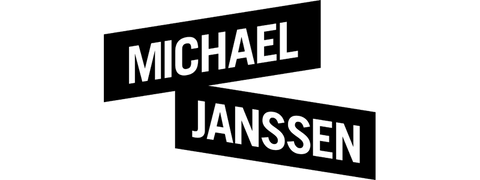Allison Cortson – Collecting Dust
2 June—30 June 2006
Galerie Michael Janssen, Cologne
These “dust paintings” invite existential questions and compel the viewer to enter into a unique, mysterious world. With Collecting Dust, Allison Cortson has brought about a conjoining of ne art, philosophy and science with the force of the immediacy of her materials. The solidity of photo-realistic subjects rendered in vibrant oils is surrounded by Cortson’s version of ‘unbearable lightness,’ the utter neutrality of white space, and subtle objects—room furnishings, a music studio, even a Ford Torino—all clearly delineated in dust collected from the various subjects’ personal environments. Captured within an ordinary, everyday moment, a subject is not oating, yet that is the sensation. Here, the once-familiar world becomes a cipher. Dust equals fragility. The viewer can no longer take physical reality for granted; it is instantly tenuous and tentative.
On one level, Cortson’s paintings are a lesson in the processes of matter and space, even making suggestions about time. We know, for example, that matter is mostly empty space. It is then possible that most of what we see is an illu- sion, or at least a transparency. According to the laws of physics, we humans and everything around us is continually disintegrating and regenerating. But in its quest to reveal truth, science is mostly a beginning, mere intellectual commentary on the natural world. Only art has the power to touch our deepest emotions and hone our insights. In contemplation of this work, our comprehension of the world is again open to question. Is reality, for example, continually created by the individual, by consensus, or by a meta-physical intelligence? Or is reality creating the individual? These paintings, simultaneously disturbing and intriguing, yet appealing, suggest there are no certain answers. This is important and brave work—confronting the viewer with the truth about her inevitable transience—that creates unten- able anxiety, yet the seductive beauty of the paintings provides an opportunity for transcendent appreciation. In their ineffability, ordinary moments assume the lucid perfection of the inexplicable, or the irreducibly poetic, in which meaning continually unfolds.
“This dust is darker,” the artist comments, now free of the white mask she wears when ‘powdering’ spaces around her pensive guitarist with his personal dust. “Everybody’s dust is a different shade—subtle, but you can see it.” It’s also true, she notes, that the majority of the dust in our own, immediate environment consists of tiny flakes of skin. The musician’s left hand plays a silent chord across shadow frets, like someone recalling a dream. Cortson believes this is her favorite painting in the group. The subject’s realism is captivating in its serenity. His hands are beautiful, caught between one instant and the next. “This isn’t real,” she remarks, done with discussing or deconstructing reality. “There’s so much comfort in thinking it is.”
Rosemarie Dimatteo

